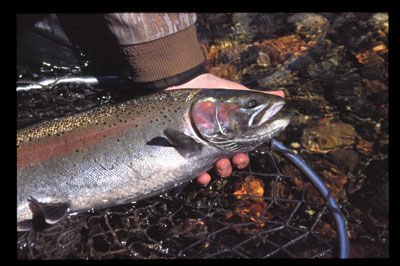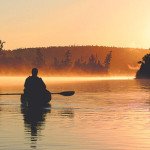Fresh fish never tastes better than it does at this time of year, which is reason enough to try ice-fishing. Coming from cold water, all species are at their prime in terms of both freshness and flavor. The fish you catch are about the freshest food available in midwinter.
Ice fishing not only provides a premium source of protein, it’s also lots of fun. The whole family can enjoy a day on the ice. To give it a try, all you need are warm clothes and boots and a minimal amount of ice-fishing tackle.
For starters, you must have a tool to cut holes in the ice. Corkscrew-style hand augers are relatively inexpensive and easy to use, especially the ones made to cut holes that are seven inches or less in diameter. Be aware that the cutting blades are very sharp and should always be sheathed (a cover is provided) when your auger is not in use. Pick up an ice-scoop to clear chips and slush from the hole. Look in your garage for a pack or five gallon bucket to store your gear, and a toboggan to transport the stuff out on the lake.
You can find a selection of ice-fishing rods and reels at places that sell fishing tackle or you can make do with your summer gear. The important thing to remember is “go light.” Thin-diameter fishing lines and small to mid-sized jigging lures will fool most fish species most of the time. If you need help selecting the right stuff, seek out an experienced ice angler or knowledgeable staffer at a tackle store.
The first two questions your ice-fishing mentor is likely to ask are what species do you want to catch and where are you going fishing? If you don’t know the answers, just say you want to go after a species that is easy to catch at a lake with easy, walk-on access. Then they can direct you to a place to fish and help you choose the right tackle.
Even on mild winter days, it is often more chilly on the lake than it is on shore. Serious ice anglers use portable tents or shelters to get out of the wind and stay warm—great comfort, but not a necessity. Wear layers of warm clothes (avoid cotton) with a wind-and water-resistant outer layer. Insulated, water-resistant boots are a must because you are standing on ice, which may in turn be covered with slush beneath a blanket of snow. You won’t last long out there with cold or wet feet.
In the Northern Wilds, you are never very far from a frozen lake filled with hungry fish. Lake trout, walleyes, yellow perch, and northern pike are popular with ice anglers. In some locales, such as near Duluth and Ely, crappies have a devoted following. Dozens of small, cold lakes in northern Minnesota and Ontario are stocked with brook trout or splake, a hatchery-produced hybrid of brook trout and lake trout, that are ice-fishing favorites. Bluegills and sunfish are uncommon.
Avid ice anglers use technology ranging from electronic fish-finders to snowmobiles to locate fishing spots and improve their success, but newcomers can do well enough by using basic tactics. When you go out on the lake, look for visible structure such as points, bays, or islands, and set up to fish nearby. Often you’ll find tracks in the snow and frozen holes that were left by previous anglers, likely indicating a good place to fish. You may even see other anglers catching fish and set up in the same vicinity. Just remember to be courteous and give other anglers a little elbow room.




